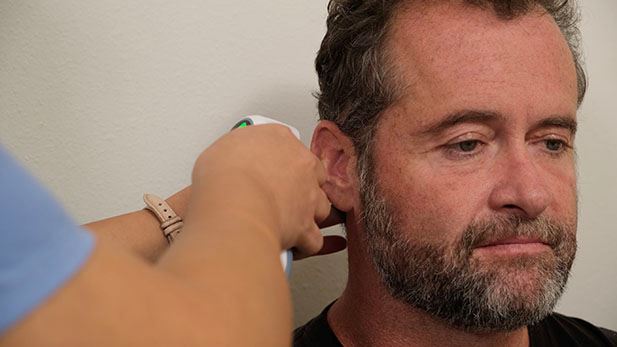

Library > Medical Assisting > Vital Signs > Obtain Vital Signs - Adult
Try Simtics for free
Start my free trialObtain Vital Signs - Adult

Materials Included:
-

-

-

-

-

Check our pricing plans here
Unlimited streaming.
Vital signs are always obtained during a routine physical examination, and are also used for assessing symptoms or as part of a follow-up assessment for patients undergoing treatment. This module provides a thorough introduction to the process of obtaining adult vital signs, covering body temperatures, pulse rates, respiratory rates, and blood pressures. Including both Learn and Test modes, the online simulator offers three different scenarios that test your ability to prepare for and assess adult vital signs; each covers temperature, heart rate, respiratory rate, and blood pressure for a variety of clinical presentations. Practice the steps of the procedure as often as you want until you are confident. This module is based on the entry-level competencies for which the Commission on Accreditation of Allied Health Education Programs (CAAHEP) and Accrediting Bureau of Health Education Schools (ABHES) test the Medical Assistant.
You’ll learn
- relevant medical terminology
- the normal values for adult vital signs, including average body temperatures (oral aural and axillary), pulse rates (apical and radial), respiratory rates, and blood pressures
- to visualize the relevant anatomy - pulse and temperature sites, and the main vessels - using our anatomy illustrations and 3D model
- how to prepare for taking an adult's vital signs
- to practice and perfect your skills in obtaining accurate temperatures and pulse rates, volume, and rhythm
- how to take blood pressure and respiration rate accurately
- the requirements for accurate recording of patient data obtained
- much more (see Content Details for more specific information)
- Describe pre-procedure considerations for measurement of vital signs.
- Describe and demonstrate the preparation for taking an adult's vital signs.
- Define normal values for adult vital signs, including average body temperatures, pulse rates, respiratory rates, and blood pressures.
- Understand and explain factors that affect body temperature and blood pressure.
- Describe and demonstrate how to take a patient's oral, aural, and axillary temperatures accurately.
- Describe and demonstrate how to obtain apical and radial pulse rate, volume, and rhythm accurately.
- Describe and demonstrate how to take a respiration rate accurately.
- Describe and demonstrate how to take blood pressure accurately and differentiate the Korotkoff phases.
- Know the correct post-procedure considerations.
- Define and demonstrate correct recording and reporting procedures.
- Define and use related medical terminology.
- Understand and apply Occupational Safety and Health Administration (OSHA) guidelines.
- Explain the Patient Privacy Rule (HIPAA), Patient Safety Act and Patients' Bill of Rights.
The SIMTICS modules are all easy to use and web-based. This means they are available at any time as long as the learner has an internet connection. No special hardware or other equipment is required, other than a computer mouse for use in the simulations. Each of the SIMTICS modules covers one specific procedure or topic in detail. Each module contains:
- an online simulation (available in Learn and Test modes)
- descriptive text, which explains exactly how to perform that particular procedure including key terms and hyperlinks to references
- 2D images and a 3D model of applied anatomy for that particular topic
- a step by step video demonstration by an expert
- a quiz
- a personal logbook that keeps track of all the modules the learner has studied and how long
For more details on features and how your students can benefit from our unique system, click here.









